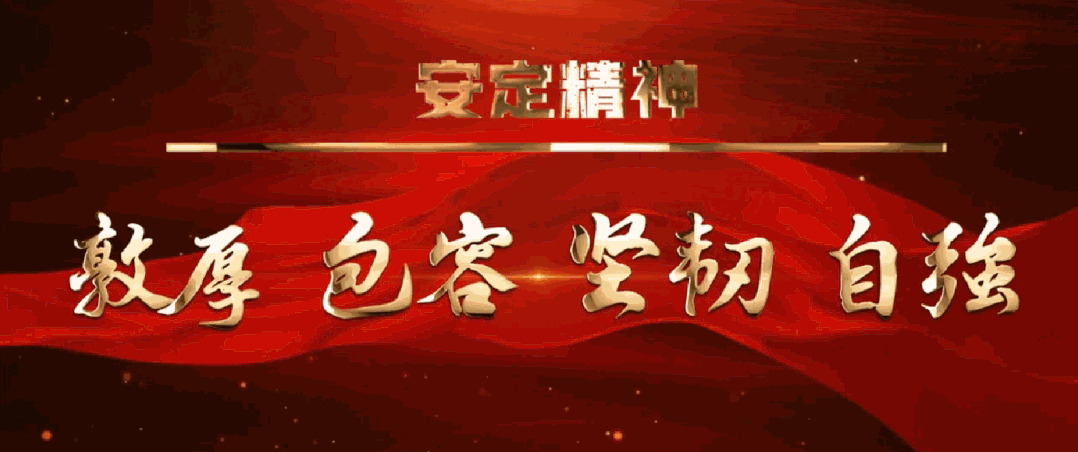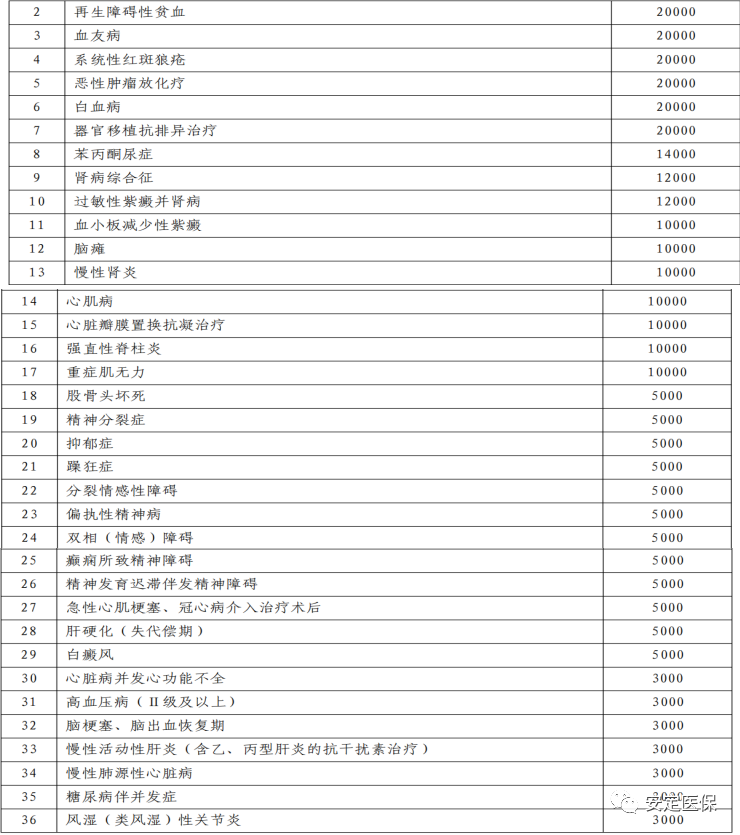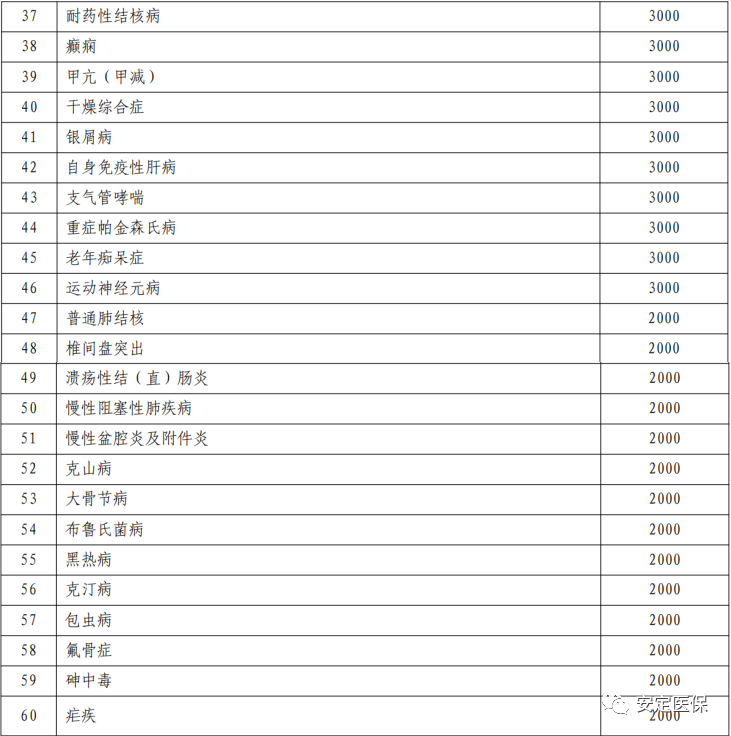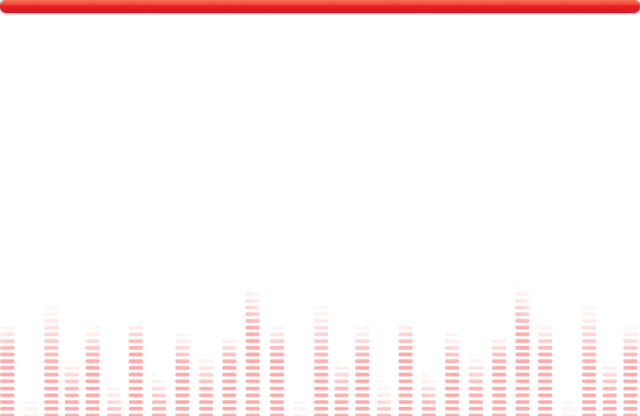Questions and Answer
Author:Futai Road Street Office Time:2022.09.08
Posted in Gansu


First, what is the "outpatient disease" of urban and rural residents?
Answer: Chronic special diseases of outpatient clinics, referred to as "outpatient slow special disease", refer to diseases that have long treatment cycles, relatively stable diseases, and cannot be cured in the short term.
2. What are the diseases of urban and rural residents?
Answer: There are 60 diseases that are included in the scope of the basic medical insurance clinic of urban and rural residents in Dingxi City. They are: uremia dialysis therapy (chronic renal failure peritoneal dialysis, hemodialysis and non -dialysis phase), regenerative disorder anemia, hemophilia, systemic lupus erythematosus, malignant tumor chemotherapy, leukemia, organ transplant anti -excretion treatment, Penzaloneuria, nephropathy syndrome, allergic purpura and nephropathy, platelet reduction purpura, cerebral palsy, chronic nephritis, myocardial disease, cardiac valve replacement anticoagulant therapy, adverse spinalitis, severe muscle weakness, femoral head necrosis, schizophrenia Diseases, depression, mania, dividing emotional disorders, paranoid mental illness, bipolar (emotion) disorders, mental disorders caused by epilepsy, mental dysplasia with mental disorders, acute myocardial infarction (including coronary heart disease intervention therapy after surgery ), Liver cirrhosis (breakdown period), vitiligo, heart disease and heart incompleteness, hypertension (level Ⅱ and above), cerebral infarction (cerebral hemorrhage recovery period), chronic active hepatitis (including hepatitis B, C, hepatitis C, hepatitis C Antitrotin therapy), chronic pulmonary heart disease, diabetic accompaniment complications, rheumatoid (rheumatoid) arthritis, drug resistance tuberculosis, epilepsy, hyperthyroidism (hyperthyroidism), dry syndrome, psoriasis, itself itself Immune liver disease, bronchial asthma, severe Parkinson's disease, dementia, motor neuron disease, ordinary tuberculosis, intervertebral disk protrusions, ulcerative junction (direct) enteritis, chronic obstructive pulmonary disease, chronic pelvic inflammatory disease, attachment inflammation, gram, gram, Mountain disease, large bone ancestor disease, Brucelli disease, black fever, Katin disease, insect disease, fluorosidosis, arsenic poisoning, malaria.
3. What are the information of slow special diseases for urban and rural residents?
Answer: 1. The applicant's valid identity documents; 2. 2 recent one -inch crown -free photos of the applicant; 3. The applicant's hospital for hospitalization or outpatient medical records, diagnosis certificates, related disease -positive examination information in the secondary and above medical institutions in the past two years And report form; 4. Fill in 2 "Approval Forms in Dingxi City and Rural Residents Slow Special Diseases".
Fourth, how to apply for a slow special disease for urban and rural residents?
Answer: Insured individuals who comply with outpatient slow special diseases, submit relevant materials to the outpatient slow special disease identification institution (Dingxi People's Hospital, Dingxi Traditional Chinese Medicine Hospital, Dingxi Second People's Hospital, and Second People's Hospital of Dading District). After the preliminary examination is completed, the monthly identification situation and related information will be submitted to the medical security bureau of the Anding District after the preliminary examination. Executive date from the date of review.
Fifth, what is the standard for urban and rural residents' slow special disease payment?
Answer: There is no line payment when the outpatient disease reimbursement of urban and rural residents is reimbursed. Within the annual reimbursement limit of the corresponding disease, 70%of the cost within the policy range (the class B project is calculated by the individual first paid by the individual) The cost of slow diseases for urban and rural residents is included in the scope of reimbursement of major illness insurance and medical assistance.
6. What is the limits of slow diseases in urban and rural residents?



7. How to reimburse with a variety of slow special diseases at the same time?
Answer: At the same time, if you have a variety of outpatient clinics, you can choose up to 3 diseases for reimbursement. Based on the maximum payment limit of the disease, the reimbursement quota of the disease is increased by 300 yuan for each increase.
8. How long is the slow special disease of urban and rural residents?
Answer: The time of enjoying the treatment of slow specialties will start from the date of review and determination. The validity period is 3 years.
Nine, can urban and rural residents' outpatient chronic special disease costs be settled directly in different places?
Answer: Starting from July 1, 2022, high blood pressure, diabetes, dialysis, malignant tumor outpatient treatment, organs transplanted anti -rejection therapy for 5 outpatient slow special diseases can be directly settled in different places. An insured person who has handled the filed in different places, holding his ID card, medical insurance electronic voucher or social security card, and a designated medical institution that has been treated with slow special diseases for outpatient clinics can achieve 5 outpatients directly settled in different places.
Source: Staning Medical Insurance


- END -
Lanzhou City Chengguan District, Qilihe District, and Anning District issued reminders: After you have been to these places, please report immediately

Announcement of Prevention and Control of Xinguan Pneumonia in Chengguan District,...
Opportunities, challenges and path selection of county development
EditorThe county seat is an important part of my country's urban system. It is a key support for urban and rural integration and development. It is of great significance to promote the construction of...